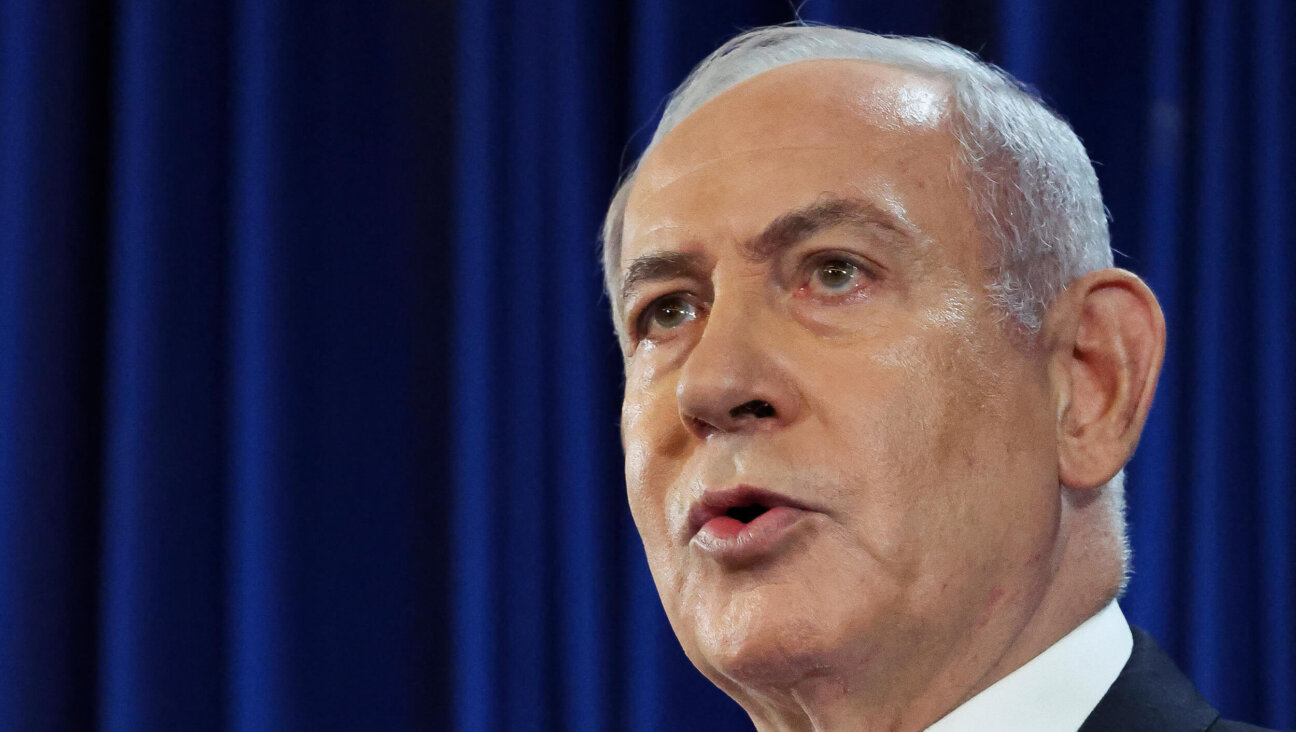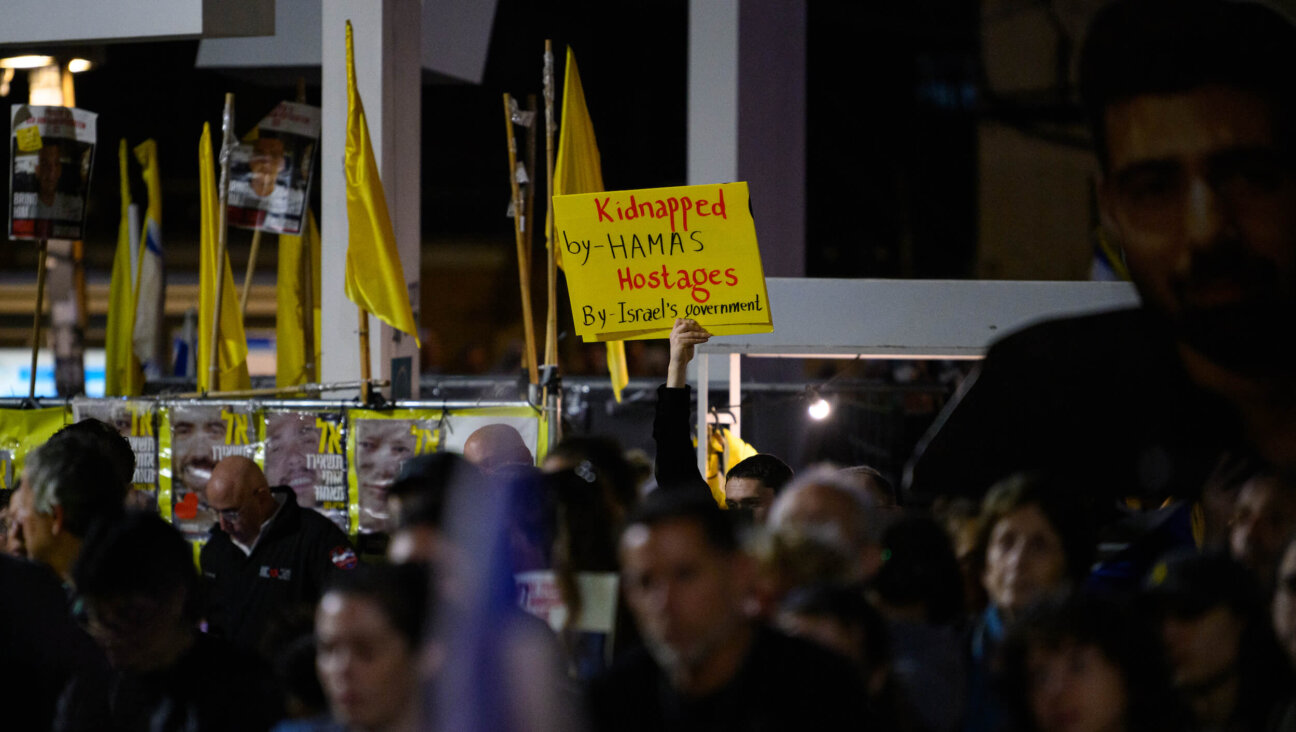Why Annapolis Worked
In the end, the Annapolis peace conference proved to be far less than the cataclysmic, watershed event that its sharpest critics had predicted. It unfolded, to everyone’s surprise, with very little upheaval. And for that reason, it might yet turn out to be far more than the pointless flop anticipated by the world-weary wise men.
It might be that the two main actors, Israeli leader Ehud Olmert and Palestinian leader Mahmoud Abbas, went to Annapolis with no intention at all of hammering out an understanding. It could be that they saw the event as the first step toward creating the proper atmospherics for a deal that they both understand full well, but that neither was prepared — yet — to sell to his constituency. If that’s the case, then the event was indeed a piece of history.
In at least one sense, Annapolis was unquestionably historic. There’s never been an Israeli diplomatic initiative that’s drawn so much noisy opposition from so many American Jews who fancy themselves Israel’s best friends. Something profound has changed in the meaning of Zionism. It used to mean solidarity with the people and nation of Israel. It’s becoming something very different, less about people and more about apocalyptic theology. And that something burst upon us this month in a blatant, unapologetic manner that’s nothing less than a watershed.
What happened in Annapolis? In a narrow sense, not much. Nobody betrayed Israel or shoved it down a slippery slope toward doom, as the right had been warning. Nobody offered any new concessions, nor even a promise of specific concessions down the road. In concrete terms, the most that can be said is that the Israeli and Palestinian leaders finally acknowledged to one another the magnitude of the concessions that will be required of each if peace is to be reached.
Beyond that, the two leaders promised only “good-faith” negotiations — “vigorous, ongoing and continuous” — to try and reach agreement on a peace treaty within the next 13 months, “before the end of 2008.” And they declared that the treaty they hoped to reach would resolve “all outstanding issues, including all core issues without exception, as specified in previous agreements.” So they hope.
Yes, it is infuriatingly vague and noncommittal, as critics of every stripe have pointed out. But there’s more there than first meets the eye. In pledging “every effort” to conclude a peace treaty within 13 months, the two leaders effectively said that reaching such a treaty might be possible. Otherwise they wouldn’t step into the noose, with the whole world watching. Olmert and Abbas are survivors, not poets.
Given the amount of time the two men have spent together discussing the conflict in the past year — not to mention the countless hours each has spent mulling it in the past — it’s safe to say that each knows the other one’s bottom line. In saying that they think a deal is possible, they are saying that they think the differences between them can be bridged. They both know of the many past efforts, both official and unofficial, to draft such a deal, from the 1988 Amirav-Husseini document to Taba to the Clinton parameters to the Geneva Initiative. Abbas himself was the co-author of one of the early drafts, back in 1995.
Both men know that every draft was nearly identical to all the others. They know that when peace comes, Israel will have to make a deeply painful concession in Jerusalem, and the Palestinians will face an equally painful compromise on refugees. The problem is not finding a middle ground that both sides can live with; everyone knows where the red lines are. The problem is shepherding the bottom-line deal through the perils of the Israeli and Palestinian political systems. To bring their nations to the peace table, Olmert and Abbas must, first of all, survive. They must preserve their shaky coalitions, keep their oppositions in check, win over their fearful electorates and, not least, lend each other a hand.
Some of the heavy lifting began this week in Annapolis, Md.. Olmert, the least sentimental of politicians, offered a heartfelt acknowledgement of Palestinian suffering, going further than any Israeli leader in memory, even crossing taboos. Indeed, he said, “I know that this pain and deprivation is one of the deepest foundations which fomented the ethos of hatred towards us.” No Israeli leader has ever come close to that sort of empathy.
Abbas was less expansive, but he too entered new territory, speaking directly to the Israeli people, acknowledging their fears and pledging to fight terror.
Do they mean it? The fashionable answer is that they don’t. The smart pundits assume that Olmert and Abbas were dragged to Annapolis against their better judgment by an American president desperate for a last-minute achievement to brandish as his legacy. Middle Eastern mavens insist that Olmert and Abbas ran to Maryland in a frantic quest for something, anything, that might salvage their own crumbling political fortunes.
These are appealingly contrarian theories, but they don’t stand up to the facts. Neither Olmert nor Abbas needed to be dragged toward compromise. Both ran for office on a platform of compromise. Abbas pledged to carry on the Fatah-PLO peace initiative that began, for better or worse, in Oslo. Olmert ran on a platform of expanding Sharon’s Gaza disengagement deep into the West Bank. Both of them went to Annapolis last week to start delivering on the campaign promises that got them elected.
The Forward is free to read, but it isn’t free to produce

I hope you appreciated this article. Before you go, I’d like to ask you to please support the Forward.
Now more than ever, American Jews need independent news they can trust, with reporting driven by truth, not ideology. We serve you, not any ideological agenda.
At a time when other newsrooms are closing or cutting back, the Forward has removed its paywall and invested additional resources to report on the ground from Israel and around the U.S. on the impact of the war, rising antisemitism and polarized discourse.
This is a great time to support independent Jewish journalism you rely on. Make a Passover gift today!
— Rachel Fishman Feddersen, Publisher and CEO
Most Popular
- 1

News Student protesters being deported are not ‘martyrs and heroes,’ says former antisemitism envoy
- 2

News Who is Alan Garber, the Jewish Harvard president who stood up to Trump over antisemitism?
- 3

Politics Meet America’s potential first Jewish second family: Josh Shapiro, Lori, and their 4 kids
- 4

Fast Forward Suspected arsonist intended to beat Gov. Josh Shapiro with a sledgehammer, investigators say
In Case You Missed It
-
Fast Forward Jewish students, alumni decry ‘weaponization of antisemitism’ across country
-

Opinion I first met Netanyahu in 1988. Here’s how he became the most destructive leader in Israel’s history
-

Opinion Why can Harvard stand up to Trump? Because it didn’t give in to pro-Palestinian student protests
-

Culture How an Israeli dance company shaped a Catholic school boy’s life
-
Shop the Forward Store
100% of profits support our journalism
Republish This Story
Please read before republishing
We’re happy to make this story available to republish for free, unless it originated with JTA, Haaretz or another publication (as indicated on the article) and as long as you follow our guidelines.
You must comply with the following:
- Credit the Forward
- Retain our pixel
- Preserve our canonical link in Google search
- Add a noindex tag in Google search
See our full guidelines for more information, and this guide for detail about canonical URLs.
To republish, copy the HTML by clicking on the yellow button to the right; it includes our tracking pixel, all paragraph styles and hyperlinks, the author byline and credit to the Forward. It does not include images; to avoid copyright violations, you must add them manually, following our guidelines. Please email us at [email protected], subject line “republish,” with any questions or to let us know what stories you’re picking up.











